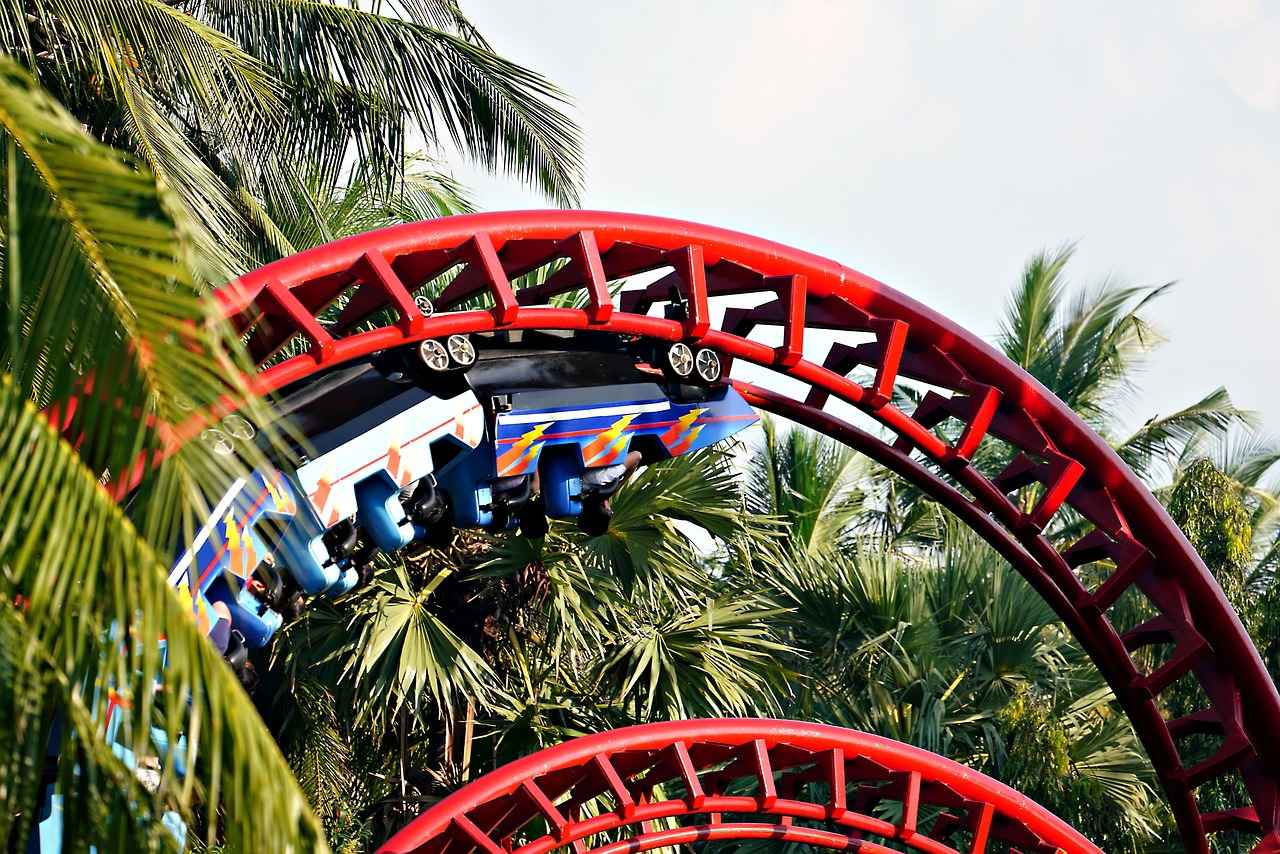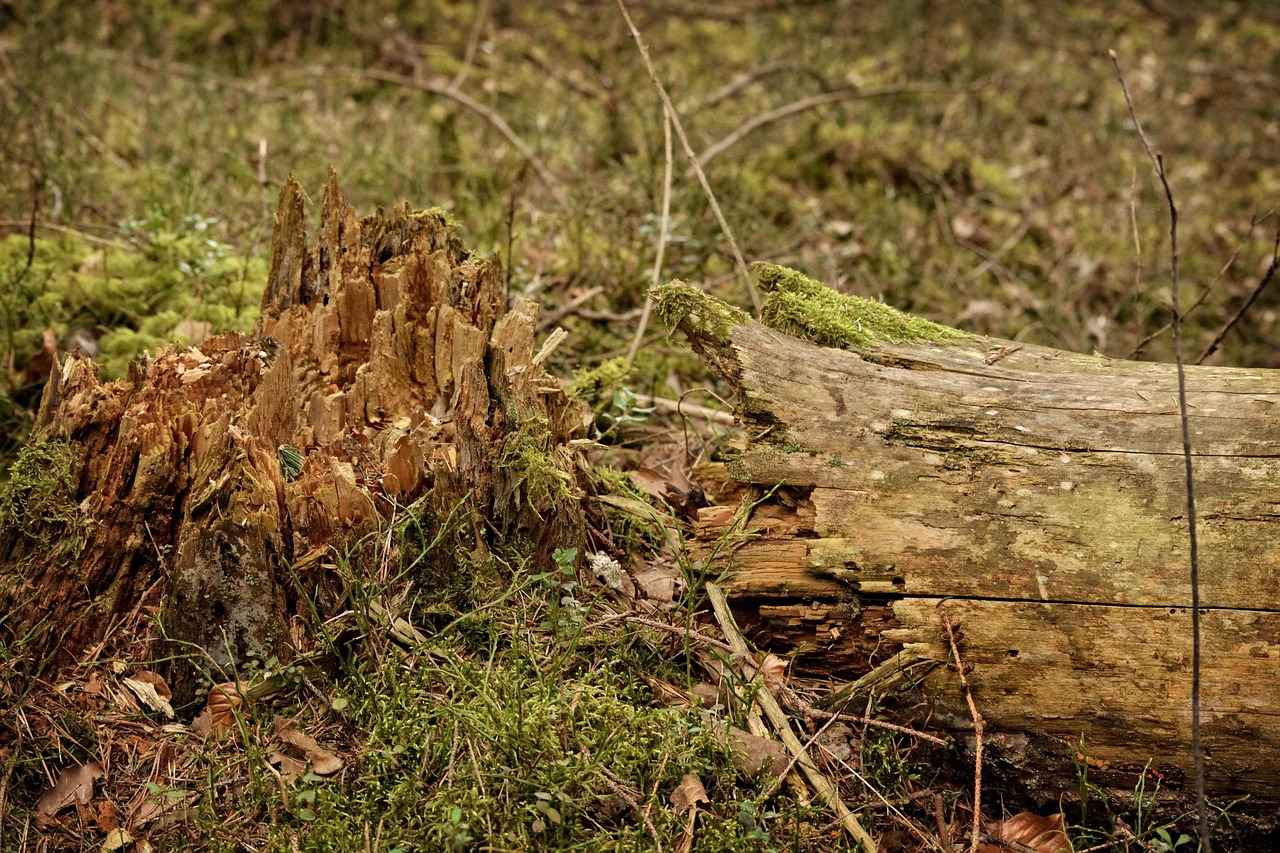This article delves into the optimal timeframes for visiting various national parks, assisting travelers in crafting their itineraries to maximize their experiences amidst nature’s stunning landscapes. Understanding how long to spend at each park can significantly enhance your adventure, ensuring you don’t miss out on key attractions and activities.
What Factors Determine Time Spent in a National Park?
Several factors influence the duration of your visit to a national park:
- Park Size: Larger parks may require more time to explore their vast terrains.
- Available Activities: The range of activities, from hiking to wildlife viewing, can extend your stay.
- Personal Interests: Your interests in photography, geology, or flora and fauna can dictate how long you linger.
How Much Time Should You Allocate for Major National Parks?
Allocating time for major national parks can vary significantly. Here’s a breakdown of suggested timeframes for popular parks:
Yellowstone National Park: Ideal Duration
Yellowstone, renowned for its geothermal wonders and diverse wildlife, deserves a stay of 3 to 5 days. This allows for a comprehensive exploration of its iconic features, including Old Faithful and the Grand Prismatic Spring, as well as ample time for scenic drives and wildlife spotting.
Yosemite National Park: Recommended Visit Length
To fully appreciate Yosemite’s breathtaking vistas and extensive hiking trails, a visit of 3 to 4 days is ideal. This timeframe enables visitors to hike iconic trails like Half Dome and enjoy the beauty of Yosemite Valley, ensuring a well-rounded experience.
Grand Canyon National Park: Suggested Timeframe
For the Grand Canyon, spending 1 to 3 days is advisable. This duration allows for exploring breathtaking viewpoints like the South Rim, hiking into the canyon, and possibly enjoying a river rafting adventure, depending on your interests.
What Activities Influence Your Time in National Parks?
Your planned activities can significantly impact how long you should spend in a park:
Hiking Trails: How Long to Explore?
The length and difficulty of hiking trails can dictate your park visit duration. While shorter trails may only require a few hours, multi-day hikes necessitate longer stays for preparation and recovery. Ensure you assess trail conditions and your physical readiness.
Wildlife Viewing and Photography: Time Considerations
For wildlife enthusiasts, allocating extra time for observation and photography is essential. Early mornings and late afternoons are prime times for spotting animals, so plan your visits around these periods for the best experiences.
How Do Seasonal Changes Affect Your Visit Duration?
Seasonal changes can greatly impact park accessibility and available activities, influencing how long you should plan to stay:
Spring and Summer: Peak Visiting Times
During spring and summer, national parks are bustling with visitors. Longer stays are often necessary to accommodate popular activities like hiking, camping, and ranger-led programs. Be prepared for larger crowds and book accommodations in advance.
Fall and Winter: Unique Opportunities
Visiting in the fall or winter offers unique experiences, such as fewer crowds and stunning foliage or snow-covered landscapes. However, some areas may require more time for winter sports or limited access, so plan accordingly.
What Are the Best Tips for Planning Your National Park Visit?
Effective planning can enhance your overall experience. Here are some practical tips:
Research and Prepare: Essential Steps
Before your trip, research park maps, trail conditions, and available amenities. Preparation ensures you allocate your time wisely and make the most of your visit.
Flexibility: The Key to Enjoyment
While it’s important to have a plan, remaining flexible allows you to adapt to changing weather or unexpected opportunities. This approach can lead to memorable experiences during your national park adventure.
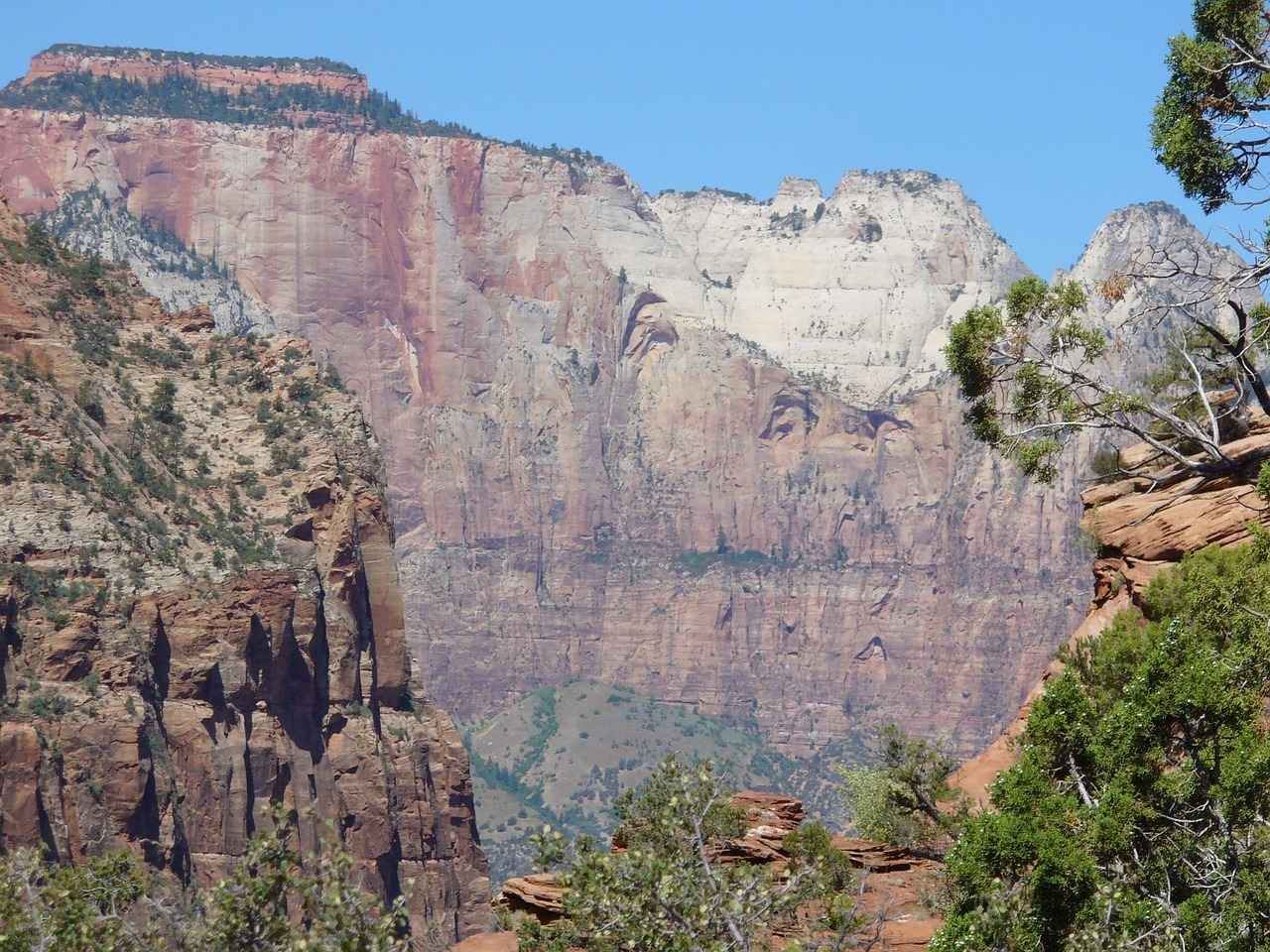
What Factors Determine Time Spent in a National Park?
When planning a visit to a national park, understanding the factors that influence your time spent is essential for a fulfilling experience. Each park offers unique landscapes and activities, making it crucial to consider various elements that can enhance your visit. This article delves into the key factors that determine how long you should allocate for your adventure in these natural wonders.
- Park Size: The size of a national park plays a significant role in how much time you should spend there. Larger parks like Yellowstone or Yosemite require more time to explore their vast terrains, while smaller parks can often be experienced in a day or two.
- Available Activities: Each park offers a variety of activities such as hiking, camping, wildlife viewing, and educational programs. The more activities you wish to engage in, the longer you should plan your stay. For example, if you want to hike multiple trails and participate in ranger-led programs, you may need several days.
- Personal Interests: Your interests significantly impact your time allocation. If you are an avid photographer, you might want to spend extra time at scenic viewpoints during the golden hours of sunrise and sunset. Conversely, if you prefer a quick overview, a shorter visit may suffice.
- Traveling Companions: The preferences of those traveling with you can also influence your duration of stay. Families with children might need more time to accommodate younger ones, while solo travelers may move at a quicker pace.
- Seasonal Considerations: The time of year you visit can affect how long you should stay. Some parks are best enjoyed in certain seasons, which can dictate the types of activities available and the time needed to experience them fully.
For instance, during the summer months, parks can be crowded, necessitating longer stays to enjoy popular attractions. Conversely, visiting in the off-season may allow for a more relaxed pace but might limit access to some areas.
To ensure you make the most of your visit, consider the following tips:
- Plan Ahead: Research park maps, available trails, and activities in advance. Understanding what to expect can help you allocate your time more effectively.
- Set Priorities: Identify your must-see spots and activities. This will help you focus your time on what matters most to you.
- Be Flexible: Weather conditions and park events can change, so maintain a flexible itinerary. This openness can lead to unexpected adventures and discoveries.
- Engage with Park Rangers: They can provide valuable insights and recommendations on how to spend your time effectively, ensuring you don’t miss out on hidden gems.
By understanding these factors and employing effective planning strategies, you can optimize your time spent in any national park, making for a memorable and enriching experience. Whether you are hiking through stunning landscapes, observing wildlife, or simply enjoying the tranquility of nature, a well-planned visit can truly enhance your appreciation for these national treasures.
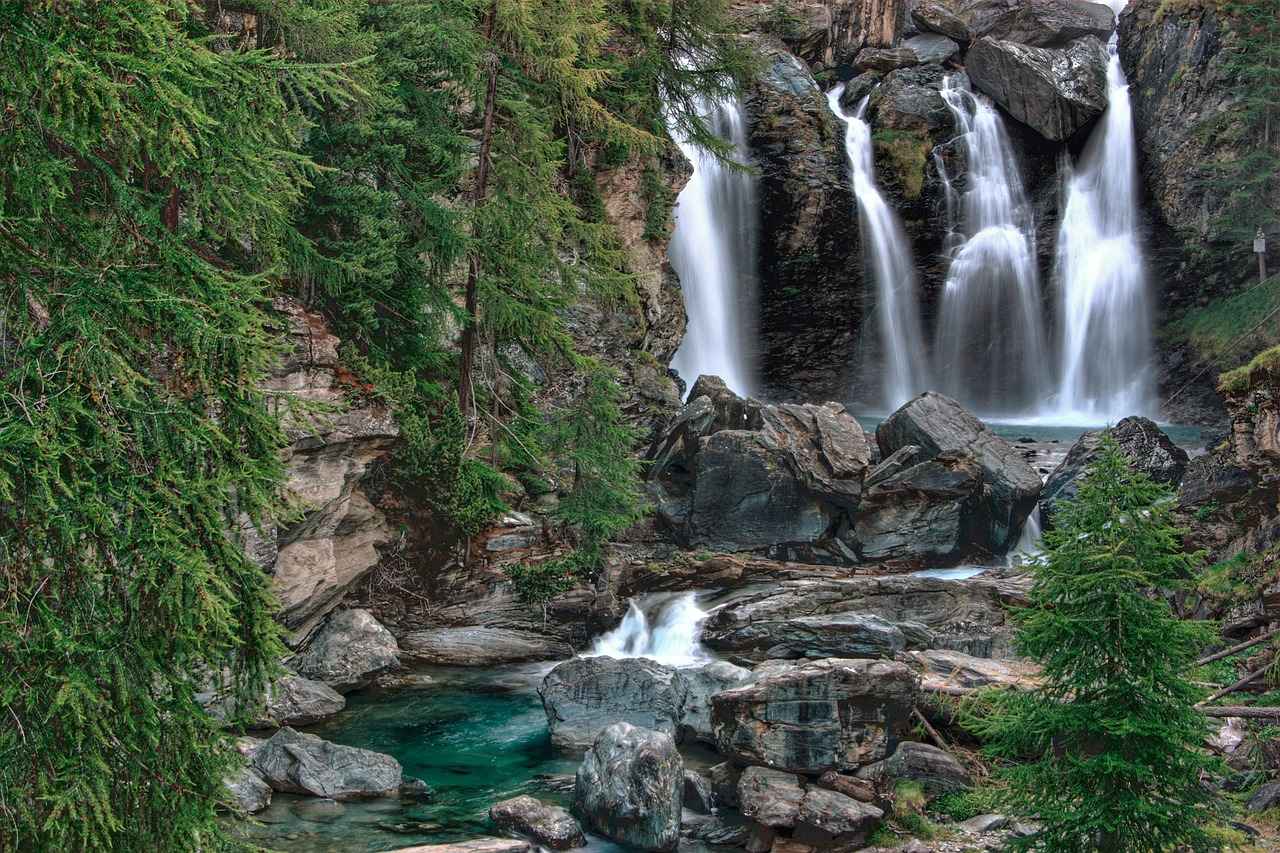
How Much Time Should You Allocate for Major National Parks?
When planning a visit to some of the most iconic national parks in the United States, understanding how much time to allocate can significantly enhance your experience. Each park offers a unique blend of natural beauty, recreational opportunities, and wildlife encounters. Below, we provide a detailed overview of suggested timeframes for major national parks, helping you to maximize your exploration.
Allocating time for major national parks can vary significantly based on several factors, including the park’s size, the activities you wish to engage in, and your personal interests. Here’s a breakdown of suggested timeframes for popular parks like Yellowstone, Yosemite, and The Grand Canyon.
As the first national park in the U.S., Yellowstone is a treasure trove of geothermal wonders and diverse wildlife. A stay of 3 to 5 days is recommended. This timeframe allows visitors to explore key attractions such as Old Faithful, the Grand Prismatic Spring, and the stunning Yellowstone Lake. Adventurers can also engage in activities like hiking and wildlife watching, making the most of the park’s extensive trail system.
For those looking to immerse themselves in the breathtaking vistas of Yosemite, a visit of 3 to 4 days is ideal. This duration provides ample time to hike iconic trails like Half Dome and Mist Trail, as well as to explore the picturesque Yosemite Valley. Additionally, visitors can enjoy rock climbing, photography, and ranger-led programs that offer deeper insights into the park’s ecology and history.
A trip to the Grand Canyon is often a once-in-a-lifetime experience. Spending 1 to 3 days here allows for exploration of the South Rim’s breathtaking viewpoints, such as Mather Point and Yavapai Observation Station. For those interested in hiking, trails like the Bright Angel Trail provide stunning views and a chance to venture into the canyon itself. Consider adding a river rafting trip for a unique perspective of this natural wonder.
The activities you choose will greatly affect how long you should plan to stay in a park. Popular activities include:
- Hiking: Different trails require varying amounts of time. Shorter trails may take only a few hours, while multi-day hikes demand more extensive planning.
- Camping: If you plan to camp, consider additional time for setting up and enjoying the natural surroundings.
- Wildlife Viewing: Allocate extra time for observing and photographing wildlife, particularly during early mornings and late afternoons.
Seasonal changes can significantly impact your visit to national parks. Here’s how:
- Spring and Summer: These are peak visiting times, often requiring longer stays to enjoy popular activities without feeling rushed.
- Fall and Winter: Visiting during these seasons offers unique experiences, such as stunning foliage or snow-covered landscapes, but may also require more time for winter sports or navigating limited access.
Effective planning can greatly enhance your national park experience. Here are some tips:
- Research: Before your trip, familiarize yourself with park maps, trail conditions, and available amenities to allocate your time wisely.
- Be Flexible: While having a plan is important, being adaptable to changing weather or unexpected opportunities can lead to memorable experiences.
By understanding these suggested timeframes and considerations, you can create a well-rounded itinerary that allows you to fully appreciate the beauty and adventure that national parks have to offer.
Yellowstone National Park: Ideal Duration
Yellowstone National Park, established in 1872, holds the title of the first national park in the United States and is often regarded as a natural wonder. With its vast landscapes, diverse ecosystems, and unique geothermal features, Yellowstone offers visitors an unforgettable experience. To truly immerse yourself in its beauty and explore the myriad of attractions, a stay of 3 to 5 days is highly recommended.
Yellowstone is renowned for its stunning geothermal features, including the famous Old Faithful geyser, vibrant hot springs, and bubbling mud pots. The park is also home to a variety of wildlife, such as bison, elk, and grizzly bears, making it a prime destination for nature enthusiasts and photographers alike. The park’s diverse landscapes range from majestic mountains to serene lakes, providing countless opportunities for exploration.
Spending 3 to 5 days in Yellowstone allows visitors to experience the park’s highlights without feeling rushed. Here’s a breakdown of how to make the most of your time:
- Day 1: Begin your adventure at the Old Faithful area, witnessing the iconic geyser’s eruptions and exploring the nearby geothermal features.
- Day 2: Head to Yellowstone Lake for stunning views and potential wildlife sightings. Consider a scenic drive along the Grand Loop Road to see the diverse landscapes.
- Day 3: Explore the Grand Canyon of the Yellowstone, where you can hike to various viewpoints, including the breathtaking Artist Point.
- Day 4: Dedicate this day to wildlife viewing in Lamar Valley, often referred to as the “Serengeti of North America.”
- Day 5: Use this day to revisit favorite spots or explore lesser-known areas like Gardiner or the Bechler region.
Yellowstone offers a plethora of activities that can influence the duration of your visit:
- Hiking: With over 900 miles of trails, hiking can vary from short, easy walks to challenging backcountry routes.
- Wildlife Watching: Early mornings and late afternoons are prime times for spotting wildlife, so plan your schedule accordingly.
- Photography: The park’s stunning landscapes and wildlife provide countless opportunities for photography enthusiasts.
The time of year you choose to visit Yellowstone can significantly impact your experience:
- Spring: Witness the park come to life with blooming wildflowers and active wildlife.
- Summer: The peak season for visitors, offering the warmest weather and full access to all park facilities.
- Fall: Experience fewer crowds and stunning autumn foliage, ideal for photography and hiking.
- Winter: A magical time for snowshoeing and cross-country skiing, but be prepared for colder temperatures and limited access.
In conclusion, a stay of 3 to 5 days at Yellowstone National Park is optimal for experiencing its diverse landscapes, geothermal wonders, and rich wildlife. By planning your itinerary around key highlights and considering seasonal factors, you can ensure a memorable visit to this iconic national treasure.
Yosemite National Park: Recommended Visit Length
When planning a trip to Yosemite National Park, understanding how much time to allocate can significantly enhance your experience. A visit of 3 to 4 days is generally considered ideal for fully appreciating the park’s breathtaking vistas and diverse hiking trails. This timeframe allows visitors to immerse themselves in the natural beauty and engage in various activities without feeling rushed.
Spending 3 to 4 days in Yosemite enables you to explore the park’s iconic features thoroughly. Within this period, you can:
- Hike Iconic Trails: Trails like the Half Dome and Yosemite Falls offer stunning views and unique challenges.
- Experience Diverse Landscapes: From the granite cliffs to lush meadows, each area provides different perspectives of the park’s beauty.
- Engage in Wildlife Viewing: Allocate time for early morning or late afternoon excursions to spot local wildlife.
- Visit Cultural Sites: Explore the Yosemite Museum and historic sites that provide insight into the park’s rich history.
During your stay, you can anticipate a range of activities that cater to different interests. Here’s a brief overview:
| Day | Activities |
|---|---|
| Day 1 | Arrival and exploration of Yosemite Valley. Visit El Capitan and Bridalveil Fall. |
| Day 2 | Hiking to Yosemite Falls and exploring Glacier Point for panoramic views. |
| Day 3 | Adventure activities like rock climbing or guided tours of lesser-known trails. |
| Day 4 | Relaxation and photography sessions, focusing on sunset views at iconic locations. |
To maximize your time, consider the following tips:
- Start Early: Begin your days early to avoid crowds and enjoy the tranquility of nature.
- Stay Hydrated: Bring plenty of water, especially if you plan on hiking challenging trails.
- Check Trail Conditions: Always verify the status of trails and weather conditions before heading out.
The time of year you visit Yosemite can also influence your experience. In spring and summer, the park is vibrant with blooming wildflowers and accessible trails. However, fall offers stunning foliage, while winter provides opportunities for snow sports and fewer crowds. Adjust your itinerary based on the season to enjoy everything the park offers.
In summary, a stay of 3 to 4 days in Yosemite National Park is ideal for fully experiencing its natural wonders. By planning your itinerary thoughtfully, you can engage in a variety of activities, ensuring a memorable visit filled with breathtaking views and unforgettable moments.
Grand Canyon National Park: Suggested Timeframe
When planning a visit to Grand Canyon National Park, it is essential to consider how much time you should allocate to fully appreciate its majestic beauty and diverse activities. Spending 1 to 3 days at the Grand Canyon is highly recommended, as this timeframe allows visitors to explore the park’s breathtaking viewpoints, engage in invigorating hikes, and even partake in thrilling river rafting adventures, depending on your interests.
One to three days is an ideal duration for several reasons:
- Scenic Viewpoints: The Grand Canyon is home to numerous iconic viewpoints, such as South Rim and North Rim. Spending at least a day allows you to witness the stunning sunrises and sunsets that paint the canyon in vibrant hues.
- Hiking Opportunities: With over 800 miles of trails, the Grand Canyon offers hikes for all skill levels. Whether you choose the Bright Angel Trail for a challenging descent or the Rim Trail for a more leisurely stroll, dedicating time to hiking is a must.
- River Rafting: For those seeking adventure, a rafting trip on the Colorado River can be a highlight of your visit. Multi-day rafting excursions require planning, so a longer stay is beneficial if this activity interests you.
During your stay, you can engage in a variety of activities that cater to different interests:
- Photography: Capture the unparalleled beauty of the canyon. The golden hour, just after sunrise and before sunset, offers the best lighting for stunning photographs.
- Wildlife Viewing: The park is home to diverse wildlife, including mule deer and various bird species. Allocate time for wildlife observation, especially in the early morning or late afternoon.
- Visitor Centers: Make sure to visit the Grand Canyon Visitor Center and Yavapai Geology Museum for educational insights and exhibits about the canyon’s formation and history.
To make the most of your time at the Grand Canyon, consider the following tips:
- Research Trail Conditions: Before your visit, check the status of hiking trails and any potential closures due to weather or maintenance.
- Book Accommodations in Advance: Lodging options within the park fill up quickly, especially during peak seasons. Secure your stay early to avoid last-minute hassles.
- Stay Hydrated: The dry climate can be challenging, particularly during hikes. Ensure you carry enough water and snacks to keep your energy levels up.
The Grand Canyon experiences varying visitor traffic throughout the year. The spring and fall months typically offer the most pleasant weather and fewer crowds, making them ideal for exploration. However, if you plan to visit during the summer, be prepared for larger crowds and higher temperatures.
In conclusion, by allocating 1 to 3 days to your visit, you can immerse yourself in the natural wonders of the Grand Canyon. This timeframe allows for a well-rounded experience, ensuring you witness its breathtaking vistas, engage in outdoor activities, and create unforgettable memories.
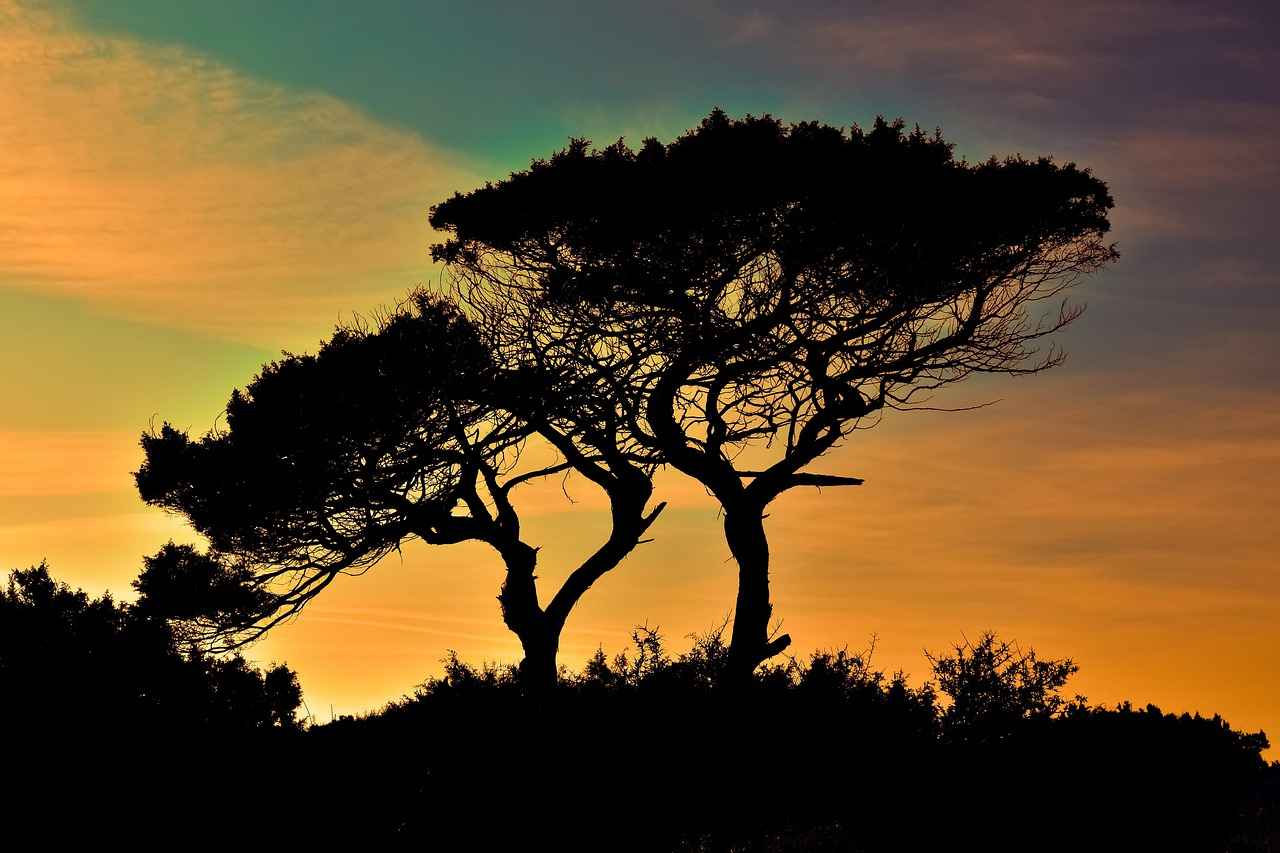
What Activities Influence Your Time in National Parks?
When planning a visit to a national park, understanding the activities you wish to engage in is essential for determining how long you should spend there. The variety of experiences available can greatly influence your itinerary, ensuring you make the most of your time in these natural wonders.
Activities such as hiking, camping, and wildlife viewing can significantly affect your overall visit duration. Tailoring your itinerary based on these activities not only enhances your experience but also helps you immerse yourself in the park’s unique environment.
Hiking is often the primary reason many visitors come to national parks. Depending on the trails you choose, the time required can vary:
- Short Trails: These can typically be completed in a few hours, making them ideal for a quick visit or for families with children.
- Moderate Trails: Expect to spend half a day to a full day on these paths, which often lead to stunning viewpoints or natural features.
- Multi-Day Hikes: For those seeking adventure, longer hikes that require overnight camping can necessitate several days in the park.
If you choose to camp, your stay will naturally extend. Camping allows for a deeper connection with the environment:
- Settle In: Allocate at least two to three days to enjoy the full camping experience, including setting up, exploring, and relaxing.
- Nighttime Activities: Don’t forget to factor in evening activities like stargazing or campfire storytelling, which can enrich your visit.
For wildlife enthusiasts, knowing when and where to observe animals is critical:
- Best Viewing Times: Early mornings and late afternoons are prime for spotting wildlife, so plan your schedule accordingly.
- Patience Pays Off: Allocate extra time for wildlife watching; you may need to wait quietly to catch a glimpse of elusive creatures.
If photography is a priority, consider the following:
- Golden Hours: The best light for photography occurs during sunrise and sunset, so plan your visits around these times.
- Scenic Locations: Research and identify key spots in advance to maximize your photographic opportunities.
Different seasons bring unique opportunities and challenges:
- Spring and Summer: These months are popular for hiking and camping, necessitating longer stays to enjoy the full range of activities available.
- Fall and Winter: Visiting during these seasons can offer fewer crowds and stunning scenery, but you may need more time for activities like snowshoeing or winter hiking.
Ultimately, the duration of your visit to a national park should be influenced by the activities you are most passionate about. Whether you are hiking, camping, wildlife viewing, or photographing nature, understanding how these elements affect your time in the park will help you create a fulfilling and memorable experience. Plan wisely, remain flexible, and embrace the beauty of the natural world around you.
Hiking Trails: How Long to Explore?
Hiking trails are a major draw for visitors to national parks, offering a chance to immerse oneself in nature while enjoying physical activity. However, the length and difficulty of these trails can significantly influence how long you should plan to spend at a park. Understanding these factors can help you tailor your visit to maximize your experience.
The duration of your hiking experience in a national park largely depends on several key factors:
- Trail Length: Shorter trails, typically 1 to 3 miles, can usually be completed in a few hours, making them ideal for day trips.
- Trail Difficulty: More challenging trails may require additional time for both hiking and recovery, particularly if they involve steep ascents or rugged terrain.
- Preparation Time: Multi-day hikes necessitate careful planning, including packing gear and food, which can extend your overall visit.
- Recovery Time: After a strenuous hike, it’s essential to allow time for rest and recovery, especially for longer excursions.
For those looking for a brief escape into nature, short hiking trails can be a perfect option. These trails often take just a few hours to complete, allowing visitors to experience the beauty of the park without committing a full day. For example, trails like the Emerald Lake Trail in Rocky Mountain National Park can be hiked within 2-3 hours, making it accessible for families and casual hikers.
On the other hand, if you’re considering a multi-day hike, such as the famous John Muir Trail in Yosemite, you should plan for a stay of at least 5 to 10 days. These hikes require not only physical endurance but also significant preparation, including securing permits, packing supplies, and planning for various weather conditions. The rewards of such hikes are immense, offering stunning vistas and a profound sense of accomplishment.
To enhance your hiking experience, consider the following tips:
- Research Trails: Before your visit, check trail maps and conditions to choose hikes that match your skill level and interests.
- Start Early: Early morning hikes can help you avoid crowds and enjoy cooler temperatures, especially during summer months.
- Stay Hydrated: Carry enough water and snacks to keep your energy levels up during your hike.
- Adjust Your Itinerary: Be flexible with your plans. If you discover a trail that captivates you, don’t hesitate to extend your stay.
Ultimately, the time you spend hiking in a national park should align with your personal goals and fitness level. Whether you opt for a quick day hike or an extended backcountry adventure, planning ahead and understanding the nuances of trail difficulty and length will ensure a fulfilling experience in the great outdoors. Enjoy the journey and the breathtaking landscapes that await!
Wildlife Viewing and Photography: Time Considerations
When planning a visit to national parks, wildlife viewing and photography should be prioritized by enthusiasts. Allocating sufficient time for these activities not only enhances your experience but also increases the likelihood of capturing stunning moments in nature. To achieve the best results, it is essential to understand the optimal times for observation and how to prepare for your excursions.
During the early mornings and late afternoons, wildlife is often more active, making these times prime opportunities for observation. Animals tend to emerge from their shelters to forage for food, which can lead to remarkable encounters. This behavior is particularly evident in species like deer, bears, and birds, which are more visible and easier to photograph during these hours.
- Research Local Wildlife Patterns: Before your trip, investigate the specific species you hope to see and their activity patterns. Understanding these can help you plan your visits around their most active times.
- Utilize Park Resources: Many parks offer ranger-led programs and workshops focused on wildlife observation. Participating in these can provide valuable insights into the best locations and times for viewing.
- Keep a Flexible Schedule: While it’s tempting to stick to a strict itinerary, allowing flexibility can lead to unexpected wildlife sightings. If you hear about a recent bear sighting, consider adjusting your plans to take advantage of the opportunity.
To make the most of your wildlife photography experience, having the right equipment is crucial. Here are some essentials:
- Camera: A DSLR or mirrorless camera with a telephoto lens will help you capture animals from a distance without disturbing them.
- Tripod: A sturdy tripod can stabilize your camera, especially in low-light conditions during early mornings or late afternoons.
- Binoculars: These are invaluable for spotting wildlife from afar and determining whether it’s worth getting closer.
- Field Guide: A guidebook can help you identify different species and learn more about their behaviors.
While observing and photographing wildlife, it is essential to maintain a respectful distance. Approaching animals too closely can cause them stress and disrupt their natural behaviors. Always follow park guidelines regarding safe distances and never feed wildlife, as this can lead to dangerous situations for both animals and visitors.
To enhance your wildlife photography, consider these tips:
- Use Natural Light: Early mornings and late afternoons provide soft, golden light that enhances the beauty of your subjects.
- Be Patient: Wildlife photography often requires waiting quietly for the perfect shot. Patience can lead to extraordinary moments.
- Focus on Eyes: When photographing animals, make sure their eyes are in focus; this draws the viewer’s attention and creates a more compelling image.
In conclusion, dedicating extra time for wildlife viewing and photography during your national park visit can significantly enhance your experience. By planning your outings around the best times for animal activity, equipping yourself with the right tools, and respecting the wildlife you encounter, you will create lasting memories and stunning images of nature’s beauty.
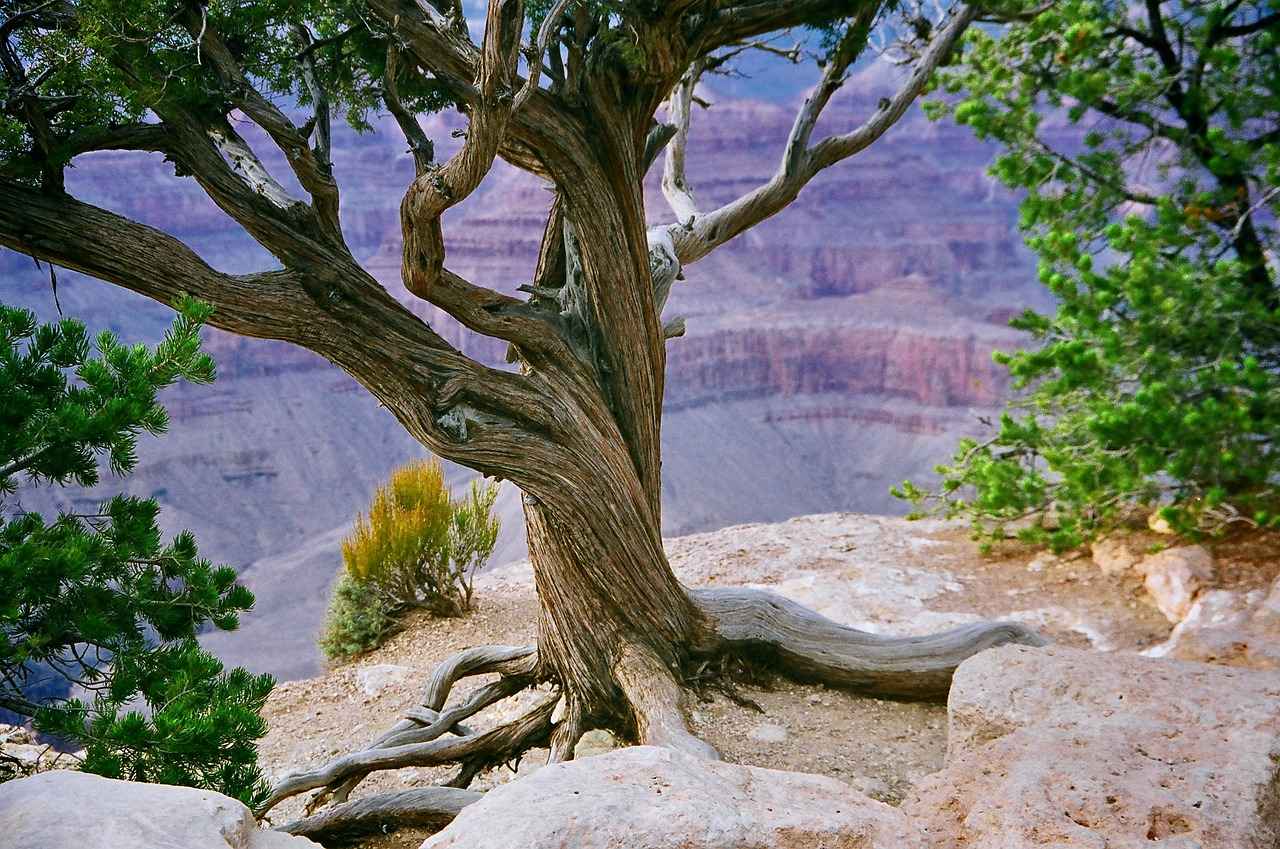
How Do Seasonal Changes Affect Your Visit Duration?
Understanding how seasonal changes influence your visit duration to national parks is essential for maximizing your experience. Each season brings its own set of challenges and opportunities that can significantly affect accessibility, activities, and overall enjoyment. Planning your trip around these seasonal variations can ensure that you have a safe and fulfilling adventure.
Spring is often considered one of the best times to visit national parks. As the snow melts, many trails and roads that were previously inaccessible become open for exploration. This season typically sees a burst of wildlife activity, making it an ideal time for birdwatching and spotting animals emerging from hibernation. However, it’s important to note that some areas may still experience lingering snow or mud, which can affect hiking conditions. Therefore, planning for 3 to 5 days allows you to fully enjoy the park while accommodating for any unpredictable weather.
During the summer months, national parks experience their highest visitor numbers. With longer days and warmer temperatures, this is the perfect time for hiking, camping, and participating in ranger-led programs. However, the increased foot traffic can lead to crowded trails and campsites, so it’s wise to book accommodations in advance. A stay of 4 to 7 days is recommended to fully immerse yourself in the various activities available, from guided tours to evening campfires under the stars.
Fall offers a stunning display of foliage and a chance to enjoy the parks with fewer visitors. The cooler temperatures make hiking more pleasant, and wildlife is often more active as animals prepare for winter. This season allows for a more peaceful experience, making it an excellent time for photography and quiet reflection. Spending 2 to 5 days in the park during this time can provide a balance of exploration and relaxation.
Winter transforms national parks into a winter wonderland, offering a completely different perspective. While some areas may be closed due to snow, others become hubs for winter sports like skiing and snowshoeing. It is crucial to check accessibility before planning your visit. Allocating 3 to 6 days during winter allows for ample time to enjoy activities like snowmobiling or simply taking in the serene beauty of snow-covered landscapes.
- Research Weather Conditions: Always check the forecast and park alerts before your trip.
- Pack Accordingly: Bring appropriate gear for the season, including layers for changing temperatures.
- Plan for Crowds: Consider visiting during weekdays or early mornings to avoid peak times in summer.
- Stay Flexible: Be prepared to adjust your itinerary based on weather conditions or park accessibility.
By understanding how seasonal changes affect park accessibility and activities, you can make informed decisions about your visit duration. This knowledge not only enhances your planning but also ensures a safe and enjoyable experience in nature’s breathtaking beauty.
Spring and Summer: Peak Visiting Times
Spring and summer are vibrant seasons for national parks, attracting a multitude of visitors eager to immerse themselves in nature. The extended daylight hours and warmer temperatures create the perfect backdrop for a variety of outdoor activities. However, planning your visit during these peak times requires careful consideration to ensure you make the most of your experience.
During spring and summer, national parks come alive with lush greenery, blooming wildflowers, and active wildlife. The pleasant weather allows for a wide range of activities, making it an ideal time for families, adventurers, and nature enthusiasts alike.
- Hiking: With trails accessible and well-maintained, hikers can explore stunning landscapes. Popular trails may require longer stays due to increased foot traffic.
- Camping: Many parks offer campgrounds that fill quickly during peak seasons. Reserving a spot in advance is crucial for those wishing to camp under the stars.
- Ranger-Led Programs: Engaging in educational programs led by park rangers can enrich your visit. These programs often require prior scheduling, so plan accordingly.
As national parks experience a surge in visitors during spring and summer, it’s essential to be prepared for crowded conditions. Popular attractions and trails may see long lines and wait times. Arriving early in the day or visiting lesser-known areas can help you avoid the crowds and enhance your experience.
To fully enjoy the offerings of national parks during peak seasons, a stay of 3 to 7 days is often recommended. This timeframe allows for:
- Multiple hikes to different trails.
- Time to relax and absorb the natural beauty.
- Participation in various ranger-led activities.
- Book Early: Lodging and campgrounds can fill up quickly. Make reservations well in advance to secure your spot.
- Plan Your Itinerary: Research the park’s layout and prioritize must-see attractions. A well-thought-out plan can help you maximize your time.
- Stay Hydrated and Prepared: The summer heat can be intense. Always carry water, snacks, and sun protection.
Visiting national parks during spring and summer offers unique opportunities, such as:
- Witnessing the migration of birds and other wildlife.
- Enjoying the vibrant colors of wildflowers in bloom.
- Participating in summer festivals and special events hosted by the parks.
In conclusion, while spring and summer are peak visiting times for national parks, careful planning and consideration of activities can lead to an unforgettable outdoor experience. Whether you’re hiking, camping, or simply enjoying the scenery, these tips will help ensure your visit is as enjoyable as possible.
Fall and Winter: Unique Opportunities
When considering a visit to national parks, fall and winter present unique opportunities that can enhance your experience. While many travelers flock to these parks during the warmer months, those who choose to explore during the cooler seasons can enjoy a quieter, more intimate connection with nature.
The fall season transforms national parks into a vibrant tapestry of colors, with stunning foliage that attracts photographers and nature lovers alike. The cooler temperatures make hiking and exploring more comfortable, allowing visitors to immerse themselves in the breathtaking scenery without the sweltering heat of summer. Additionally, the fewer crowds during this time mean that you can enjoy popular trails and viewpoints without feeling rushed or overwhelmed.
Winter, on the other hand, offers a completely different kind of beauty. Parks blanketed in snow provide a serene and peaceful atmosphere, perfect for those seeking solitude and reflection. However, winter visits require careful planning. Some areas may have limited access due to snow, and certain activities like winter sports (such as skiing or snowshoeing) may require additional time for preparation and safety considerations. Make sure to check park conditions before your visit to ensure a safe and enjoyable experience.
- Photography: Capture the stunning landscapes adorned with autumn colors or dramatic winter scenes.
- Wildlife Viewing: Fall is a great time to spot animals preparing for winter, while winter can offer unique sightings, such as tracks in the snow.
- Hiking: Many trails remain open during the fall and winter, providing opportunities for breathtaking hikes with fewer people.
- Winter Sports: Engage in activities like cross-country skiing, snowboarding, or snowshoeing in designated areas.
To make the most of your fall or winter visit, consider these practical tips:
1. Check the weather forecast and dress in layers to adapt to changing conditions.2. Research park accessibility and trail conditions ahead of time.3. Plan your activities around daylight hours, as they are shorter in winter.4. Bring necessary gear for winter sports if you plan to participate.
Ultimately, visiting national parks in the fall or winter can yield unforgettable experiences. The tranquility of fewer visitors allows for a deeper appreciation of the natural environment. Whether you are drawn to the colorful leaves of autumn or the peaceful snow-covered landscapes of winter, these seasons offer a unique lens through which to view and enjoy the beauty of our national parks. So, pack your bags, embrace the chill, and embark on an adventure that promises to be both refreshing and inspiring.
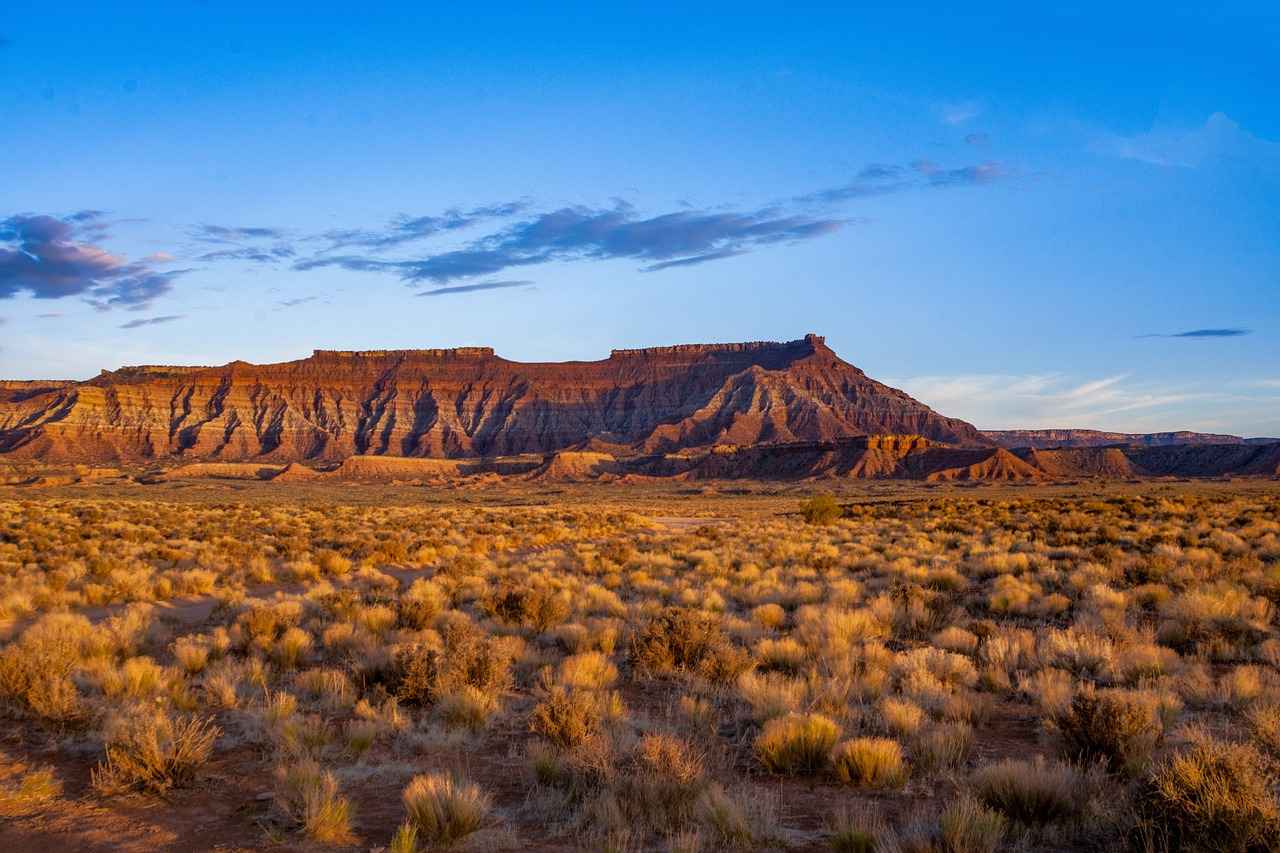
What Are the Best Tips for Planning Your National Park Visit?
When it comes to exploring the breathtaking beauty of national parks, effective planning is essential for an unforgettable experience. Understanding how to maximize your time can significantly enhance your visit. Here are some practical tips to consider when determining how long to spend in a national park.
Before embarking on your adventure, it is crucial to research the national park you plan to visit. Look into the park’s size, features, and available activities. Each park has its unique offerings, from stunning vistas to diverse wildlife. Familiarize yourself with park maps, trails, and amenities to create a tailored itinerary that suits your interests.
Your interests will play a significant role in determining how long you should stay. If you enjoy hiking, allocate more time for exploring various trails. Wildlife viewing and photography enthusiasts should also plan for additional hours to ensure they can capture the perfect shot. Take into account the specific activities you want to engage in, as this will help you decide the duration of your visit.
The season in which you visit can greatly influence your experience. For instance, spring and summer often bring larger crowds, so you may want to extend your stay to fully enjoy the park’s attractions. Conversely, visiting in fall or winter can provide a quieter experience, but some areas may have limited access or require more time for winter sports. Always check the weather and park conditions before your trip.
While it’s important to have a structured plan, remaining flexible is key to enjoying your visit. Weather can change unexpectedly, and you may encounter opportunities that you hadn’t anticipated. Allowing for some spontaneity in your itinerary can lead to unforgettable moments and discoveries.
Don’t forget to consider the time it takes to travel to and from the park. Depending on your location, travel can consume a significant portion of your trip. Additionally, ensure you allocate time for rest and relaxation. Spending a few hours unwinding at a scenic viewpoint or enjoying a picnic can enhance your overall experience.
Many national parks offer educational programs led by park rangers. These programs can provide valuable insights into the park’s ecology, history, and wildlife. Participating in these activities can enrich your visit and help you appreciate the park on a deeper level. Make sure to check the schedule for ranger-led programs during your stay.
In today’s digital age, numerous online resources and mobile applications can assist in planning your visit. Websites like the National Park Service provide up-to-date information on park conditions, trail closures, and visitor tips. Additionally, consider downloading apps that offer maps and trail information, ensuring you have all the necessary tools at your fingertips.
Finally, set realistic expectations for your visit. Understand that you may not be able to see everything in one trip. Prioritize your must-see attractions and be open to exploring lesser-known areas of the park. This approach will help you enjoy your experience without feeling rushed or overwhelmed.
By following these tips, you can effectively plan your national park visit, ensuring a memorable adventure filled with exploration and discovery.
Research and Prepare: Essential Steps
Planning a trip to a national park can be an exhilarating experience, but proper preparation is vital to ensure you make the most of your time there. One of the first steps in your adventure should be to research the park you intend to visit. This includes examining park maps, understanding trail conditions, and identifying available amenities. Such groundwork not only enhances your experience but also helps you allocate your time wisely.
Researching a national park is essential for several reasons:
- Understanding Layout: Familiarizing yourself with park maps helps you navigate efficiently, reducing the chances of getting lost.
- Trail Conditions: Knowing the current conditions of trails allows you to choose suitable hikes based on your fitness level and preferences.
- Amenities and Services: Identifying available amenities like restrooms, picnic areas, and visitor centers can enhance your comfort during your visit.
Park maps provide critical information that can significantly influence your itinerary. Here are some key elements to consider:
- Trail Information: Look for details on trail lengths, difficulty levels, and estimated hiking times.
- Points of Interest: Identify must-see locations such as waterfalls, scenic viewpoints, and historical sites.
- Safety Guidelines: Review any safety advisories or restrictions that may be in place, especially in areas known for wildlife.
Trail conditions can change rapidly due to weather or maintenance. To stay updated:
- Visit Official Websites: Most national parks maintain official websites with current trail conditions and alerts.
- Contact Park Rangers: Speaking to park rangers can provide firsthand information on trail accessibility and safety.
- Utilize Social Media: Many parks have social media accounts where they post real-time updates and visitor experiences.
Knowing what amenities are available can significantly enhance your visit. Here are some amenities to check:
- Camping Facilities: If you plan to camp, confirm the availability of sites and make reservations if necessary.
- Food and Water: Identify locations for food and water refills, especially if you’re hiking in remote areas.
- Visitor Centers: These centers often provide educational resources, maps, and ranger-led programs that can enrich your experience.
Once you’ve conducted thorough research, the next step is to allocate your time wisely. Here are some tips:
- Prioritize Activities: Decide which activities are most important to you, such as hiking, wildlife viewing, or photography.
- Plan for Downtime: Allow for some downtime to relax and soak in the natural beauty around you.
- Stay Flexible: Be prepared to adjust your plans based on weather conditions or unexpected discoveries.
In conclusion, thorough research and preparation are key to a successful national park visit. By understanding park maps, checking trail conditions, and knowing available amenities, you can ensure a fulfilling and enjoyable experience in the great outdoors.
Flexibility: The Key to Enjoyment
When planning a visit to national parks, it’s essential to consider the unpredictable nature of outdoor adventures. While having a structured itinerary is beneficial, flexibility can significantly enhance your experience. This adaptability allows you to respond to changing weather conditions, unexpected wildlife sightings, or even spontaneous activities that may arise during your visit.
Flexibility in your travel plans can lead to memorable experiences that rigid schedules might miss. For instance, a sudden rain shower might prevent you from hiking a planned trail, but it could also create the perfect conditions for stunning photography or an unexpected wildlife encounter. Being open to changing your plans can transform your visit into an unforgettable adventure.
- Monitor Weather Conditions: Regularly check the weather forecast. If rain is predicted, consider alternative indoor activities or shorter hikes that can be completed quickly.
- Be Open to New Experiences: Engage with park rangers or fellow visitors to discover hidden gems or lesser-known trails that you may not have originally planned to explore.
- Adjust Your Itinerary: Allow for free time in your schedule. This way, if you find a location that captivates you, you can spend more time there without feeling rushed.
- Pack Smart: Bring gear for various activities, such as rain jackets, hiking boots, and photography equipment, so you are prepared for any situation that may arise.
Embracing spontaneity can lead to extraordinary moments. For example, you might stumble upon a breathtaking viewpoint that isn’t listed in any guidebook or encounter a rare animal during a leisurely stroll. These experiences often become the highlights of your trip, creating lasting memories that you will cherish long after your adventure.
While creating a rough itinerary is crucial, it’s equally important to build in flexibility. Here are some tips:
1. Prioritize Must-See Attractions2. Identify Alternative Activities3. Allow Extra Time for Exploration4. Keep an Eye on Park Events
In conclusion, while planning is essential for a successful national park visit, embracing flexibility is equally vital. By allowing yourself to adapt to changing conditions and unexpected opportunities, you can enrich your experience and create unforgettable memories. So, as you prepare for your next national park adventure, remember that sometimes the best moments are the unplanned ones.
Frequently Asked Questions
- How do I decide how long to stay at a national park?
Choosing the right duration for your national park visit depends on several factors, including the park’s size, the activities you want to engage in, and your personal interests. A good rule of thumb is to research the park beforehand and consider what you want to see and do.
- Is it possible to see everything in a national park in one day?
While some smaller parks can be explored in a day, larger parks like Yellowstone or Yosemite require more time to fully appreciate their beauty. Spending 3 to 5 days in these parks allows for a deeper experience, including hiking, wildlife viewing, and enjoying scenic drives.
- What activities should I prioritize during my visit?
Activities like hiking, wildlife viewing, and photography can greatly enhance your experience. If you’re keen on hiking, plan to tackle trails that match your skill level and allocate enough time to enjoy the views and take photos. Don’t forget to consider the best times for wildlife observation!
- How do seasonal changes affect my visit duration?
Seasonal changes can significantly impact your visit. For instance, spring and summer are peak times with more activities available, while fall and winter offer unique experiences like fewer crowds and stunning landscapes. Adjust your stay based on these factors to make the most of your trip.
- What are some tips for planning my national park visit?
Researching park maps, trail conditions, and available amenities is crucial for effective planning. Also, keep your itinerary flexible to adapt to changing weather or unexpected opportunities that may arise during your adventure!

